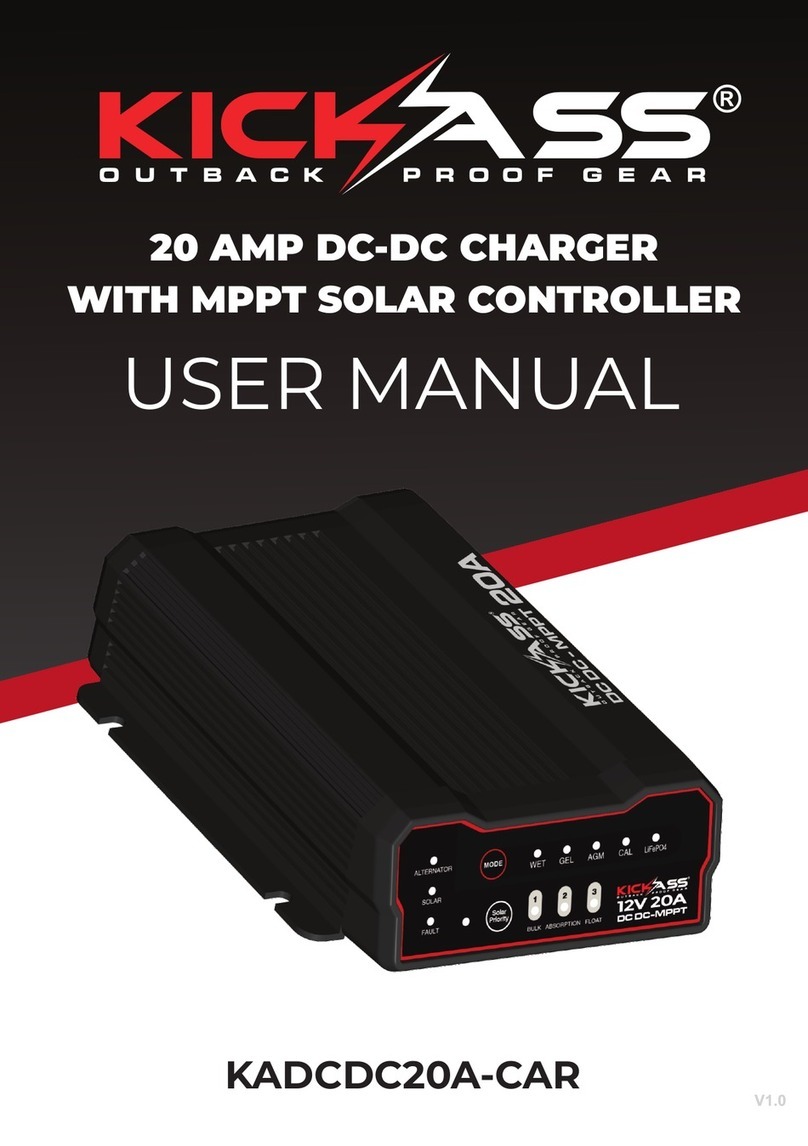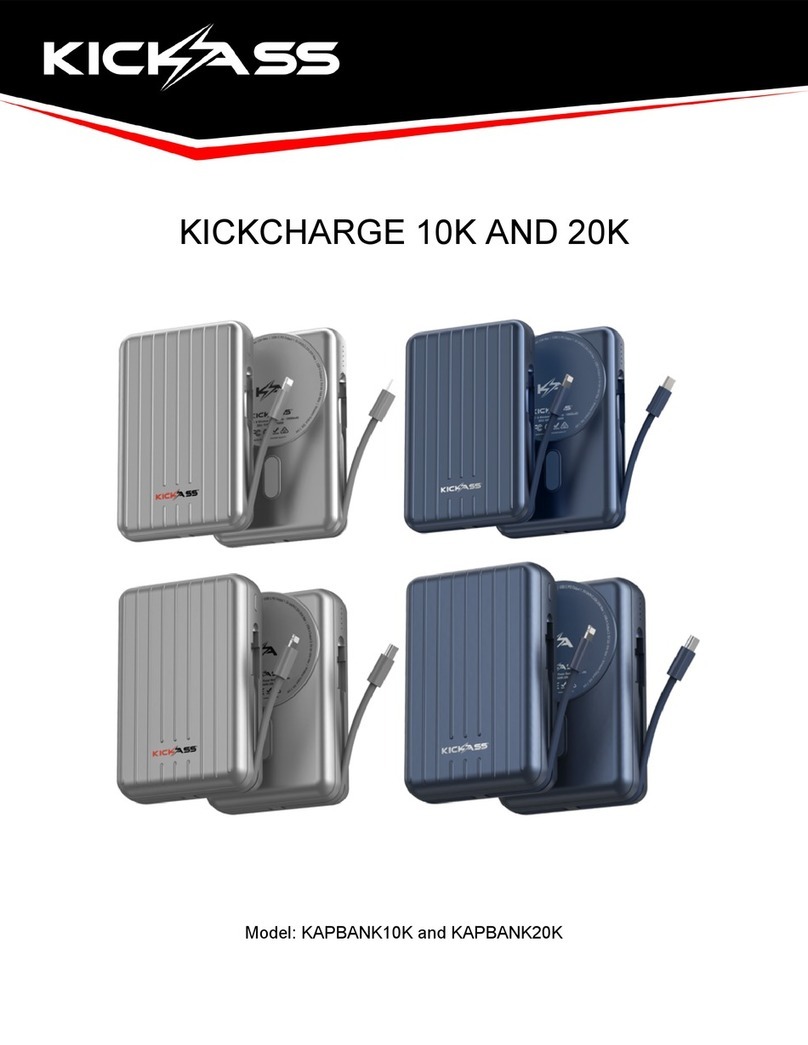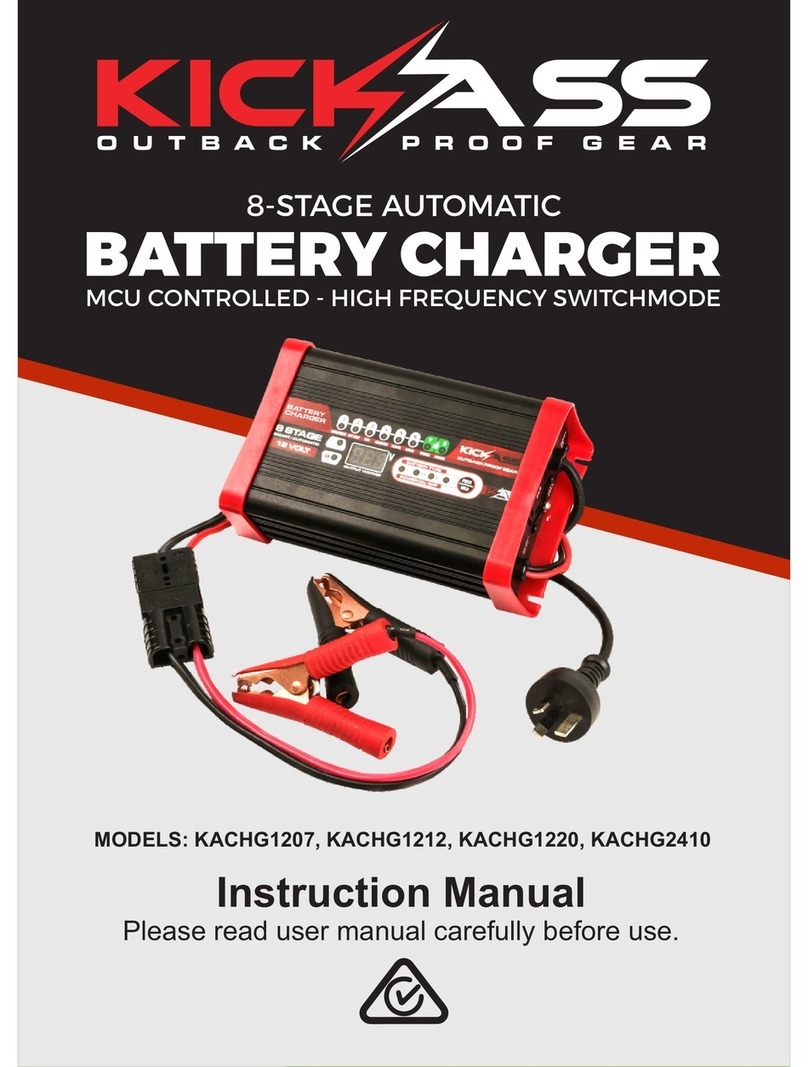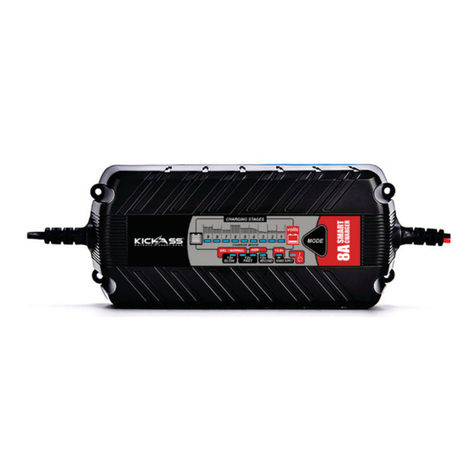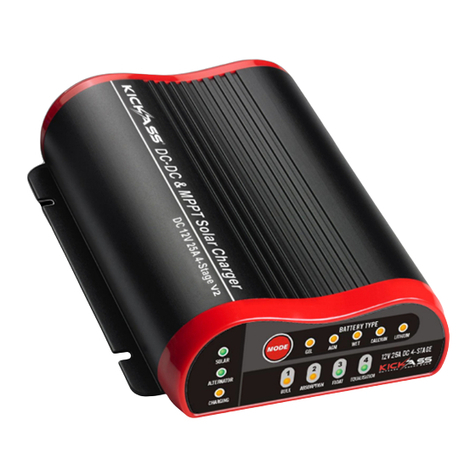
1
ŸTo avoid injury or damage to your vehicle ensure the instructions are read
carefully and understood.
ŸBatteries can produce harmful vapour and explosive gases when being
charged.
ŸEnsure batteries are mounted and stored in an area with good ventilation.
ŸAs this Charger has powerful output current, circuit protection such as fuses or
circuit breakers must be installed as near as possible to the batteries - refer to
wiring diagrams in this manual for correct fitting.
WARNINGS
This manual will give you all of the essential information you need to own and
operate your new KickAss 20/40A DCDC Charger with MPPT Solar Controller.
The purpose & features of the KickAss 20/40A DCDC Charger with MPPT Solar
Controller:
uCan charge multiple battery types:
Compatible with GEL, AGM, WET, CALCIUM or Lithium LiFePO4.
uPrevent your auxiliary battery from draining your start battery:
Built-in voltage sensing will ensure your start battery charges your auxiliary battery
when the vehicle is running. It will then disconnect the start battery from the
auxiliary battery when the vehicle is not running.
uEnsure your auxiliary battery is being fully charged and maintained:
Most modern vehicles (especially those manufactured after 2010) do not provide
the correct voltages and charge control to safely and completely charge your
auxiliary battery. The Charger overcomes this issue by boosting the charge voltage
to an optimal output level while ensuring your auxiliary battery is safely charged via
its multi-stage charge algorithm.
uWhen your vehicle is not charging, charge from the built-in MPPT solar
controller:
Maximum power point tracking is the most efficient type of solar controller and
allows you obtain the maximum amount of charge from your solar panels. When
your vehicle is not doing the charging, the built-in MPPT solar controller will let your
solar panels do the work.
